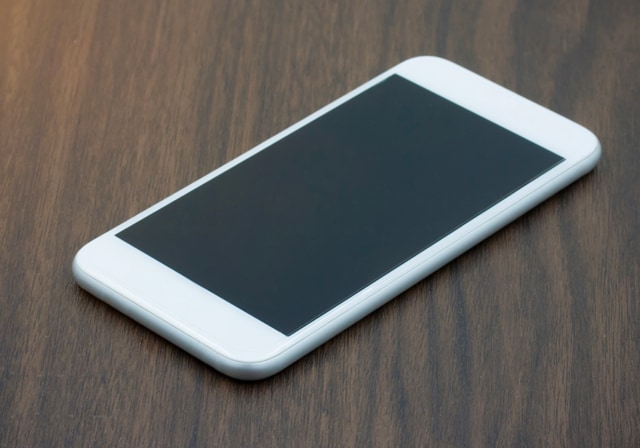Now, they're back with a modern twist. Today’s foldable smartphones blend nostalgia with cutting-edge innovation, proving the flip phone evolution is far from over. So, let’s rewind and take a look at the fascinating history of the flip phone, from the first flip phone to now.
When did flip phones come out?
When the flip phone was invented by Motorola in 1989, the Motorola MicroTAC didn’t quite catch on. However, the popular Motorola StarTAC would soon follow in the 90s. So, it’s safe to say that Motorola was at the forefront of flip phone development.
Here’s a closer look at the two releases in the U.S. that started it all:
- Motorola MicroTAC: Released in 1989 and now considered the oldest flip phone in the U.S., the Motorola MicroTAC boasted a compact form and handy flip mechanism. Measuring just over 9-inches long when open and weighing 12.3 ounces, it was considered small compared to the hefty brick phones of the day. However, at a whopping $3,000, the first Motorola flip phone was far from mainstream.
- Motorola StarTAC: The real flip phone story begins in 1996 with the debut of Motorola’s revolutionary StarTAC. Weighing just over three ounces, it was the smallest cell phone to date, setting new standards with its compact form, flip mechanism, and portability, all at a much more affordable price of $1,000.
The StarTAC’s design combined practicality with aesthetics, making it a must-have device, and marking the true beginning of flip phone popularity.
The golden era: 4 popular flip phones in the 2000s
As technology advanced, flip phones evolved, reaching peak popularity in the 2000s. Iconic models dominated, including these four standout devices:
- Sanyo SCP-5300 (2002): This flip phone was the first camera phone to be released in the U.S.
- Motorola razr V3 (2004): Slim and stylish, the razr symbolized luxury and coolness.
- Sony Ericsson Z520 (2005): This quad-band device had great reception and a swappable front plate in a choice of colors.
- Nokia N93 (2006): This Nokia boasted a cool swivel design, video recording capabilities, and the best camera on the market to date.
Flip phones weren’t merely gadgets; they reflected personal style. Custom ringtones, replaceable shells, and carrier promotions made these devices accessible, cementing their place in pop culture.
Flip phones around the world
Flip phones didn’t just take off in the U.S., they took on a life of their own across the globe, with some of the most creative and advanced designs coming from overseas:
- Japan: Here, flip phones became cultural icons in their own right. Nicknamed "Galápagos phones" because they evolved so uniquely from global trends, these clamshells were ahead of their time, boasting mobile payments, built-in TV tuners, and high-quality cameras long before smartphones caught up. Compact, tech-packed, and distinctly stylish, they were the blueprint for what mobile could be.
- South Korea: This country turned flip phones into multimedia hubs, with features tailored for music, video, and even mobile gaming.
- Europe: Embracing sleek, fashion-forward designs and practical enhancements, people were impressed by features like dual-SIM capabilities and customizable shells that matched local preferences.
Around the world, flip phones weren’t just about function, they were a fusion of culture, design, and emerging tech. In many ways, their international influence helped shape what we expect from mobile devices today: versatility, personalization, and a little bit of flair.
The decline: Flip phones vs. smartphones
The moment Steve Jobs stepped on stage and unveiled the first iPhone in 2007, the future of mobile phones snapped into focus, and flip phones were suddenly on borrowed time. Instead of physical keypads and tiny displays, full-screen web browsing, mobile apps, and cameras would soon take center stage, only getting better with each release. The app ecosystem exploded, and suddenly, the phone was also a camera, a GPS guide, a music player, a calendar, and beyond.
Flip phones, designed for quick calls and tactile texting, couldn’t compete and quickly started to feel outdated in a world that wanted bigger screens and more capabilities.
By the early 2010s, flip phones had largely retreated from the spotlight. They found new homes in niche markets, like seniors who valued simplicity and familiarity, or people just looking for a reliable backup phone. Carriers continued to release basic flip models, often with large buttons and simplified interfaces, designed with ease-of-use in mind.
The comeback: Foldable smartphones & flip phone revival
Now, foldable devices are back on the main stage with a futuristic twist. Today’s flip phones, and now foldable smartphones, blend retro charm with advanced tech, bringing that iconic feel to the touchscreen era. Here are four examples:
- Samsung Galaxy Z Flip series: These sleek foldables feature flexible AMOLED displays that fold in half like a classic clamshell, offering the full smartphone experience in a pocket-friendly package. From hands-free selfies to multitasking modes, the Z Flip has redefined what a modern flip can do.
- Samsung Galaxy Z Fold series: Unlike traditional flip phones, the Z Fold series unfolds into a larger tablet-sized display, perfect for multitasking and immersive media. These devices blend innovative tech like ultra-smooth refresh rates, powerful processors, and water resistance, pushing foldables beyond nostalgia into true productivity tools.
- Motorola razr foldables: Motorola brought back its most legendary design with a serious tech upgrade. The new razr combines a vivid foldable OLED screen with a familiar silhouette, plus 5G connectivity and AI-enhanced cameras—all in a body that still fits in your palm.
- Google Pixel Pro Fold series: Google’s entry into foldable world offers a crisp OLED display, advanced camera system, Google AI and smooth multitasking, bringing premium features to the growing foldable market.
These reimagined flip phones are a compelling alternative for those who want both convenience and screen space. For others, it’s a touch of nostalgia paired with next-gen performance. Here’s a closer look at the amazing features these modern phones have to offer.
*Product pricing and availability are subject to change. Visit our website for the latest offers on phones, devices, and accessories.
*This comparison guide was created by T-Mobile to help you explore smartphones in our store. The opinions expressed here reflect our editorial perspective based on publicly available features, specifications, and articles.
Today’s foldable smartphone features: 2025 model chart
| Feature | Samsung Galaxy Z Fold7 | Samsung Galaxy Z Flip7 | Motorola razr Ultra 2025 | Google Pixel 10 Pro Fold |
|---|---|---|---|---|
| Display | Main: 8" Dynamic AMOLED 2X | Main: 6.9" Dynamic AMOLED 2X | Main: 7.0" Super AMOLED | Main: 8.0" Super Actua |
| Cover: 6.5″ Dynamic AMOLED 2X | Cover: 4.1″ Super AMOLED | Cover: 4.0" pOLED | Cover: 6.4" Actua cover | |
| Processor | Snapdragon 8 Elite | Exynos 2500 | Snapdragon 8 Elite | Google Tensor G5 |
| RAM | 12GB | 12GB | 16GB | 16GB |
| Storage | Up to 1TB | 256GB / 512GB | 512GB / 1TB | 256GB / 512GB / 1TB |
| Rear cameras | 200MP + 12MP + 10MP | 50MP + 12MP | 50MP + 50MP | 48MP + 10.8MP + 10.5MP |
| Front cameras | 10MP + 4MP under-display | 10MP + 4MP under-display | 50MP | 10MP (cover) + 10MP (inner) |
| Battery | 4,400 mAh | 4,300 mAh | 4,700 mAh | 5,000 mAh |
| Charging | 25W wired / 15W wireless | 25W wired / 15W wireless | 68W wired / 30W wireless / 5W reverse | 45W wired / Qi2 |
| OS version | Android 16 | Android 16 | Android 15 | Android 15 |
| Durability | IP48 water- and dust-resistant | IP48 water- and dust-resistant | IP48 water- and dust-resistant | IP68 water-resistant |
Flip phones in culture & lifestyle
While high-tech flip phones are here to stay, the original types of flip phones, the ones with physical keypads and no apps, are quietly making a comeback. For many, these pared-down devices, also called dumb phones, represent a form of digital freedom: fewer distractions, more intentional communication, and a break from the constant pull of social media. Without push notifications, tracking, or algorithmic feeds, some feel they offer peace of mind with a level of connectivity. They’re also popular among professionals who want a separate work phone, or parents looking for a first device for kids that isn’t a gateway to the entire internet, carving out a new place in modern life.
What's next for the flip form factor?
As discussed, the flip phone’s future is unfolding in two directions:
- Basic flip phones: Carving out a niche in minimalist tech, wellness-focused lifestyles, and privacy-first thinking. Expect to see more carriers offering updated models with better battery life, clearer calls, and even limited smart features like text dictation or basic GPS, without the overwhelming features of full-blown smartphones.
- Foldable smartphones: With each new generation, manufacturers are refining hinge durability, display quality, and pricing, while also focusing on powerful chips, AI-powered features, and advanced multitasking tools.
A legacy that keeps bending
The flip phone’s trajectory, from pop culture staple, to quiet decline, to recent revival, shows just how adaptable these devices really are. Whether it’s basic models for focused living, or foldable smartphones pushing tech boundaries, flip phones continue to find new relevance.
You May Also Be Interested In:
- Historical Evolution of iPhone
- The History of Samsung Galaxy Smartphones
- Z Fold7 vs. Z Flip7: Which Foldable Galaxy is Right for You?
Sources:
https://en.wikipedia.org/wiki/Motorola_StarTAC
https://www.samsung.com/levant/smartphones
https://www.motorola.com/us/en/family/razr
https://store.google.com/product/pixel_9_pro_fold
https://www.thehenryford.org/collections-and-research/digital-collections/artifact/182871
https://sixtysixmag.com/landing/flip-phone-history
https://www.t-mobile.com/dialed-in/devices/dumb-phone





